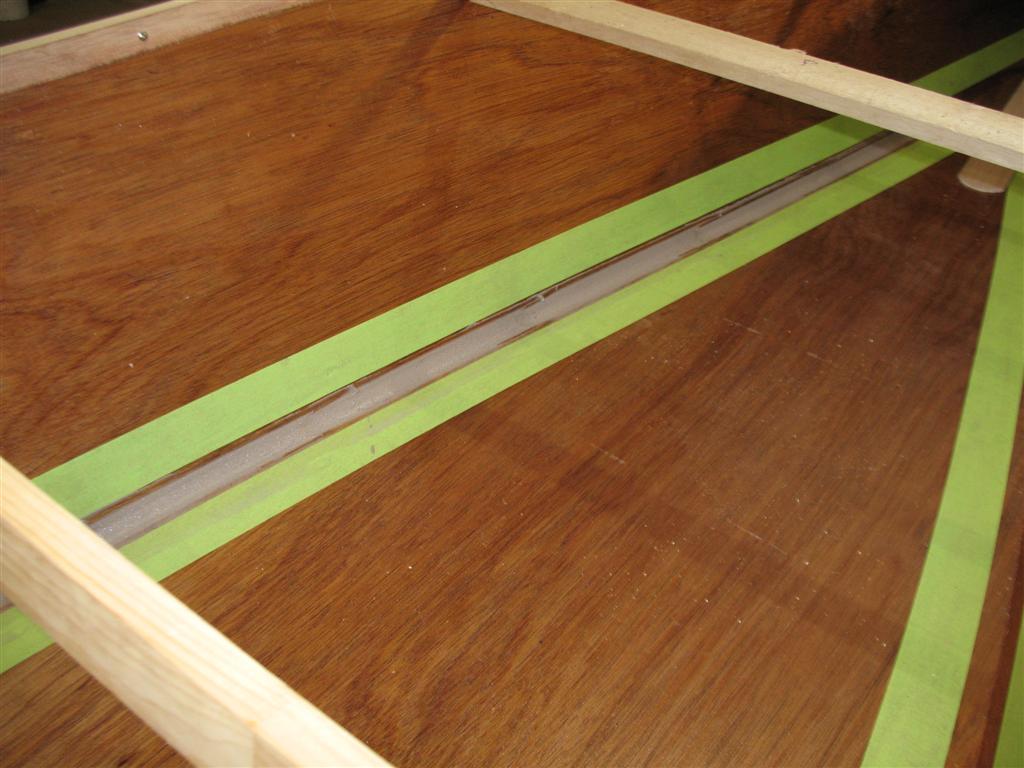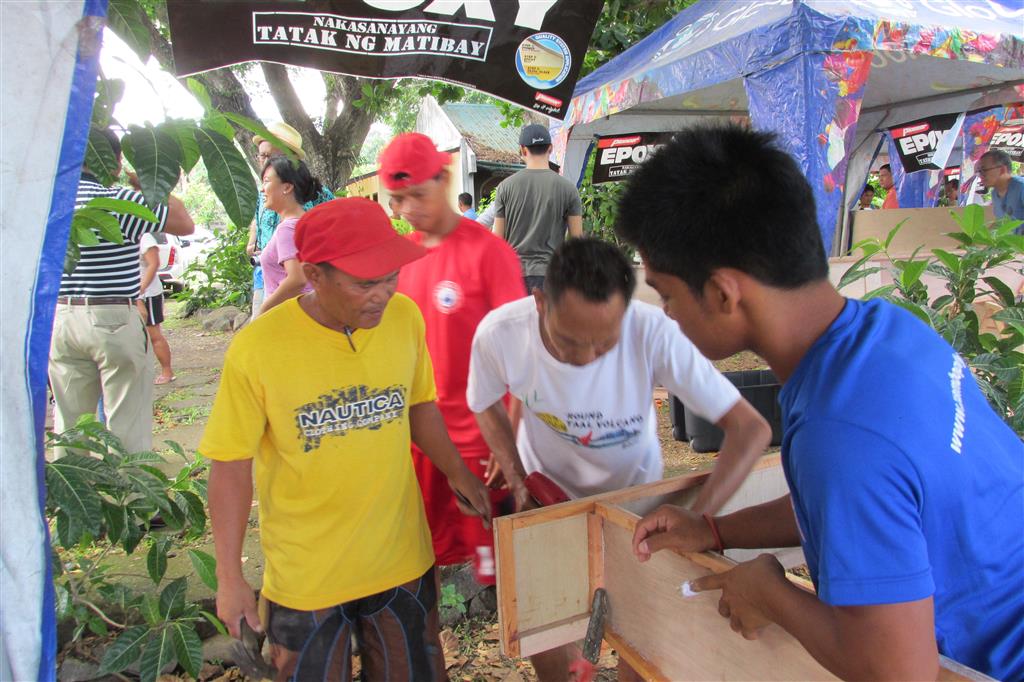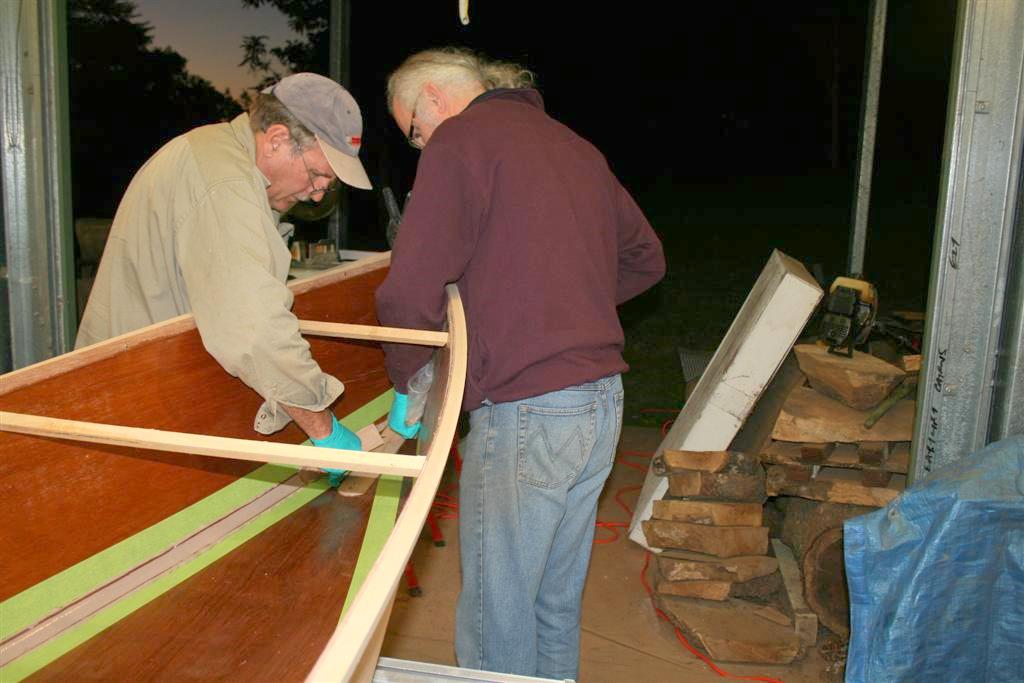Question from Kevin Wright:
Is there any great strength or time difference between using framing glued with epoxy and epoxy fillets for gluing boat panels together
Reply by Michael:
As long as the specifications are met the join is as strong as the plywood either side.
For timber joints the gluing surface to the plywood has to be three times the thickness of the thinner ply in the join. This already has significant safety factors, so the glue area doesn’t need to ever be more than this for strength. Particularly if the outside corner is glass taped.
With a fillet it is just about the same rule. The radius of the fillet has to be three times the thickness of the thinner ply in the join. – In the example below, the plywood is 6mm thick (4mm ply would need a 3 x 4 = 12mm fillet etc). However there are a couple of limitations.

- This is assuming that the angle between the plywood being filleted is roughly 90 degrees. If the angle is more acute, the fillet can be reduced to match the glue area requirement of timber. If the glue area on the ply is 3 times the smaller ply thickness then it is OK.
- with thicker plywood – larger than 9mm (3/8″) the cost of the epoxy fillet becomes quite large – so using a much smaller fillet to smooth the corner and the appropriate number of glass tapes becomes much more economical in materials.
- where the angle between the ply is more obtuse (wider than 90 degrees the radiussed fillet can end up being too thin in the middle where it crosses the join … also with variable angle side the visual width of the fillet will change continuously … so in those circumstances I use a flat ended filleting tool so that the glue contact area to ply is correct and the filllet will be much wider across the join and have the same visual width the whole length.
Also not just using cab-o-sil but some wood flour as well will make the fillet fade into the general timberwork.

If organised and using the gaffer tape method with fillets (and the ply and gaffer tape are compatible to hold well) the building speed can be terrifying, particularly with eggcrated construction like the Oz Racer – or anything that has a self draining cockpit – there is almost two boats worth of filleting/joinery when that is the situation – and filleting saves a huge amount of time, particularly over setups that require bevelled timber glue cleats (which adds another process.
Here is one of my Quick Canoe designs we group built in France over a week to canoe down the Loire River the following week. With the right tape, the method works really well.

Another way of doing a bogglingly fast fillet job is to use one of the gap filling cyanoacrylate glues for holding the panels together temporarily.
Both the tape method and the cyanoacrylate method assume only slight tensions to hold the panels together. DON’T try in the bow sections of the Eureka … that nice shape takes quite a bit of tension to hold and you need copper wire twisted
But at the same time as lauding the advantages of fillets, I do like using timber in many applications as it produces a very fair (smooth) hullshape rather than the small scale wobbles of much stitch and glue work. The Goat Island Skiffs use timber joinery and they end up being a very smooth shape.

